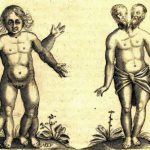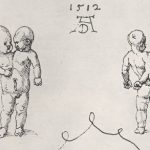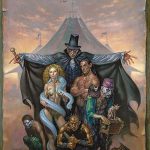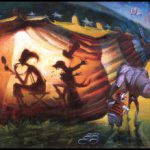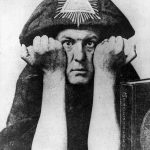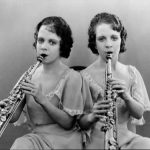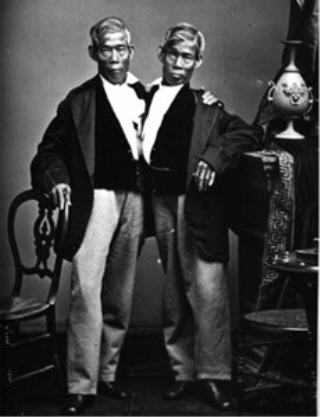 They were perhaps the most famous of all congenital freaks to be displayed in America.
They were perhaps the most famous of all congenital freaks to be displayed in America.
Born in Siam in May 1811, discovered by Robert Hunter in 1824 and described scientifically by Prof. J.C. Warren at Harvard University in 1829, they were both natural and non-Western freaks, which made them particularly freakish in the eyes of a public willing to pay to see them.
They both married two English sisters. They toured in with their wives and children, and their Family Book, wherein was written the names of their 22 children, "presents an ambiguity about who really fathered whom". In January, 1874, Chang Bunker died after a severe case of bronchitis, possibly from a cerebral clot. Eng died shortly thereafter.
After their deaths it was determined they could have been successfully separated, a medical option that was never offered to Eng and Chang during their lives.
Although Eng and Chang’s fame helped coin the phrase ‘Siamese Twins’, they were not the first pair of conjoined twins recorded in medical annals as there were probably about 100 such pairs known by the time of their 1811 births, a fact which helped the King of Siam reverse an early death sentence on the brothers. In fact, conjoined twins were recorded as early as 945 in Armenia and the first pair of successfully separated twins took place in 1689 by German physician G.
More famous freaks

